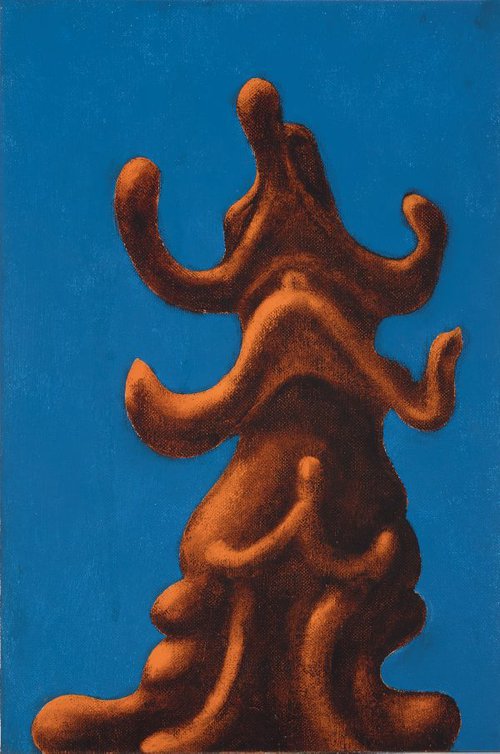-
Details
- Date
- 1995
- Media category
- Painting
- Materials used
- synthetic polymer paint on canvas, 6 panels
- Dimensions
-
244.0 x 1098.0 x 2.0 cm overall
:
a-f - panels 1 - 6, 224 x 183 x 2 cm, each panel
- Signature & date
Signed and dated c. verso [panel a], black marker "Tony Clark/ 1995".
- Credit
- Moët & Chandon Art Acquisition Fund 1996
- Location
- Not on display
- Accession number
- 213.1996.a-f
- Copyright
- © Tony Clark
- Artist information
-
Tony Clark
Works in the collection
- Share
-
-
About
Tony Clark is transfixed by historical things, and there is a clue to this interest in his biography. At age six he left Canberra with his parents for Britain and a year later they settled permanently in Rome. Clark’s parents were amateur historians and took their son on trails throughout the Italian countryside visiting ruins and sites of antiquity.
His early love of classical art, architecture and literature was later energised by a return to London of the ‘swinging 60s’ when the pervasive popular culture was (in Richard Hamilton’s words) ‘transient, expendable, low-cost, mass-produced, young, witty, sexy, gimmicky, glamorous and big business’.1 Clark was sixteen. This collision explains, retrospectively and in part, the shape of Clark’s later efforts, for precedents have always been important to him. Another critical ingredient was encountering the conundrums of Marcel Duchamp. So pop, classicism and conceptual art had converged to provide an echo-chamber where each strand could comment on the other.
Clark’s love of the ‘recherché’ – often marginal genres that have dropped out of art history – acts to subvert the normative ideas we have about modernism, formalism and representation. His 1993 ‘Jasperware’ paintings for example, put together the pop principle of early industrial design, classical references to Greek architectural friezes and a conceptual ambition to turn painting into anti-painting.
Jasperware was developed by Josiah Wedgwood in the 18th-century as a mass-produced ornament to fit out neoclassical interiors. These standardised white bas-reliefs on a coloured ground drew their inspiration from cameo gems that in turn recalled Greek vases. In most of his series, Clark keeps to off-white and two neutral greys to generate cartoonish ornaments in the form of hills, rocks, trees, clouds and suns. However in ‘Jasperware painting (pink)’ Clark’s faux-classical pillars or balustrades are rendered in cream and grey against a pale pink backdrop. These look like repeatable, interchangeable models that pay ironic homage to Wedgwood’s earliest principles of mass-production.
With their biomorphic three-dimensionality, Clark’s ‘Jasperware’ paintings also trouble the old hier-archical relations between painting, sculpture and the decorative arts. In his ‘Kufic landscape’ series, which he began in 1991, Arabic scripts from the 8th century are stylised to become low-relief organic forms – palms, flowers and trees – on multipanelled backdrops. ‘Landscape’ is also used to describe elongated page formats, wider than they are tall, on which certain Qu’ranic manuscripts were written. Here Clark picks up on the ongoing art-historical dispute between abstraction and figuration, as well as colliding Western representation of landscape with the Islamic prohibition on creating likenesses.
1. Hamilton ironically defined this in 1957, quoted in ‘Richard Hamilton: new technology and printmaking’, Alan Cristea Gallery, London 1998, p 24
-
Bibliography
Referenced in 1 publication
-
George Alexander, Contemporary: Art Gallery of New South Wales Contemporary Collection, 'Popism and screen culture', pg.204-245, Sydney, 2006, 218.
-



